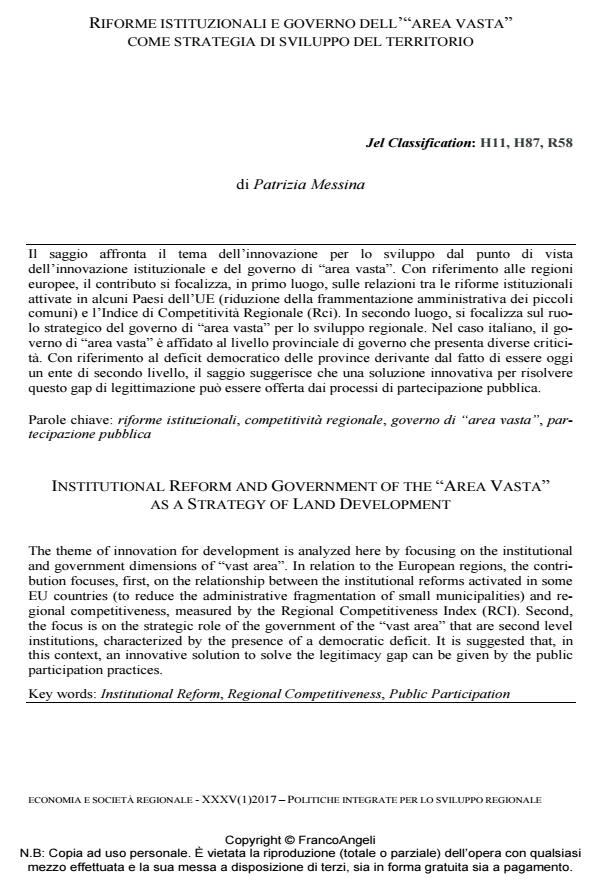Institutional reform and government of the "area vasta" as strategy of land development
Journal title ECONOMIA E SOCIETÀ REGIONALE
Author/s Patrizia Messina
Publishing Year 2017 Issue 2017/1
Language Italian Pages 9 P. 21-29 File size 441 KB
DOI 10.3280/ES2017-001003
DOI is like a bar code for intellectual property: to have more infomation
click here
Below, you can see the article first page
If you want to buy this article in PDF format, you can do it, following the instructions to buy download credits

FrancoAngeli is member of Publishers International Linking Association, Inc (PILA), a not-for-profit association which run the CrossRef service enabling links to and from online scholarly content.
The theme of innovation for development is analyzed here by focusing on the institutional and government dimensions of "vast area". In relation to the European regions, the contribution focuses, first, on the relationship between the institutional reforms activated in some EU countries (to reduce the administrative fragmentation of small municipalities) and regional competitiveness, measured by the Regional Competitiveness Index (RCI). Second, the focus is on the strategic role of the government of the "vast area" that are second level institutions, characterized by the presence of a democratic deficit. It is suggested that, in this context, an innovative solution to solve the legitimacy gap can be given by the public participation practices.
Keywords: Institutional Reform, Regional Competitiveness, Public Participation
Patrizia Messina, Riforme istituzionali e governo dell' "area vasta" come strategia di sviluppo del territorio in "ECONOMIA E SOCIETÀ REGIONALE " 1/2017, pp 21-29, DOI: 10.3280/ES2017-001003